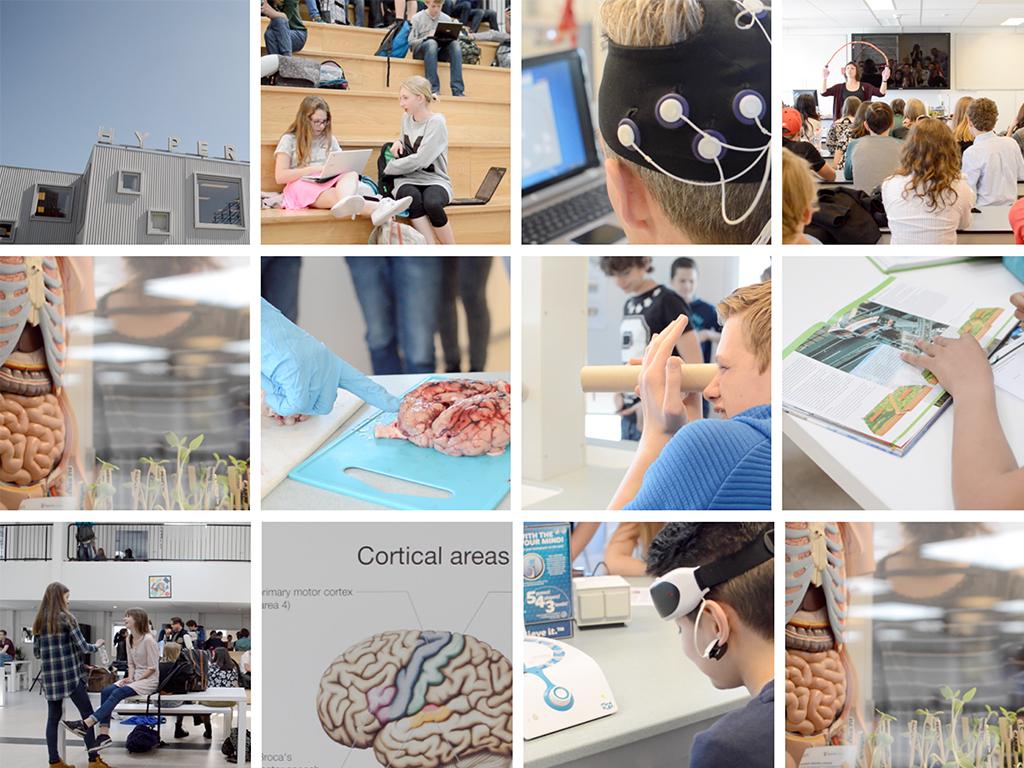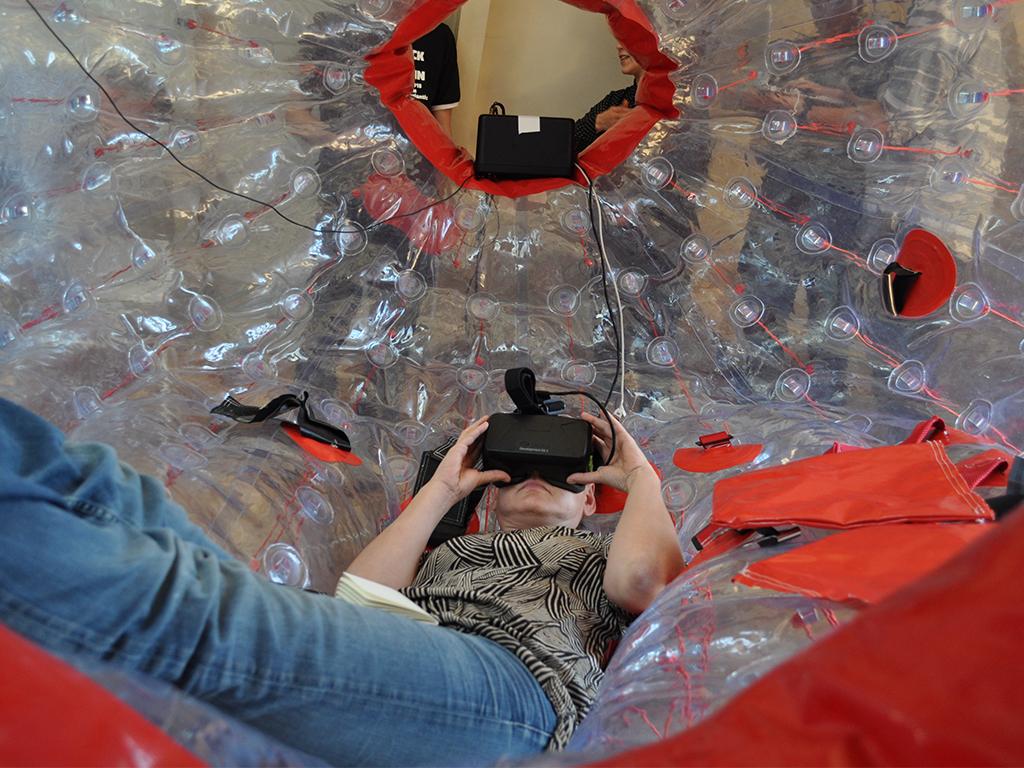By our guest-neuroscientist Wobbie van den Hurk.
With the help of students from the Hyperion Lyceum in Amsterdam Noord, a specialized Hack the Brain team went in search of the best ideas for the coolest brain hacks for Hack the Brain 2015. Everyone has preconceived notions about the grey matter inside their heads. Newspapers, commercials, and movies are all full of references to the brain. In science, neuroscience an active field of research.
Youngsters consider the ultimate brain hack
And, more and more, insights and techniques from neuroscience find their way into society not only through healthcare, but also through education. To prepare for our brain-hackathon in June, we wanted to know what the students from the Hyperion Lyceum thought of these developments and (in particular) the applications and hacks they want to see realized.
We were allotted 90 minutes per classroom to inspire students and challenge them to share their best ideas with us. Ambitious? Maybe. But, we were also visiting 15 year-old students whose brains are highly plastic—so they can still learn, connect, and invent many new things in a short space of time.
To prepare the students, we provided a number of informative and creative resources about the techniques of neuroscience and how the brain functions. For example, we screened episodes of Klokhuis en Tegenlicht about the brain and a film from the Cognitive Science Movie Index.
A walk through the brain
The workshop started with a round of three, inspirational learning stations. In small groups, the students rotated between:
- Calf Brains: Brain anatomy means more if you can slide your finger along the large bumps (gyri) and fissures (sulci) of the cerebrum, the ridges (small gyri and sulci) of the cerebellum, and the smooth white brainstem.
- A brain-computer interface (BCI) demo: Jan, a TOA (technical teaching assistant of the Hyperion Lyceum), demonstrated a brain-powered PacMan game and also showed students how to make a ball float through a track by tightening or relaxing their concentration. This was made possible by 4 BCI experts - students of the Donders Institute (Radboud University Nijmegen).
- Different tests from the lab to demonstrate the tricks and workings of your own brain. For example, using satay sticks to measure the sensitivity of different body parts to draw a map of your sensory cortex. Or, place two different images in front of either eye to see what image your brain creates in your consciousness—two working eyes and a paper towel roll are enough to demonstrate this phenomenon.
Get busy!
After the stations, the students had to quickly connect all this new information to their own ideas about education. It was time for the students to build their own brain hacks! The students gathered in small groups to work with tubes, pipe cleaners, party hats, and the question “How do you want to use brain technologies to enrich your life as a high school student?” Sometimes, there were tough questions for us: “Why do we still not know how consciousness works in the brain? I want to make a wristband for measuring or artificial systems with a consciousness.”
After flash presentations of the students' fantastic ideas about consciousness, we found that they also wanted to buy each other's products (at least if they get to choose the colour). Five classes (with an average of 25 students each) delivered around
30 futuristic life-enhancing brain hacks. All these ideas will be provided as inspiration to the hackers participating in the "Hack the Brain – Education' hackathon.
A glimpse of the brain hacks
Here's a small sampling of what the students came up with:
- A new dimension to learning together: person A is preparing for an exam and can upload their knowledge via a headband or hat to person B.
- Tests are superfluous: the teacher has a headpiece through which he or she can see directly into the students's brains to check whether they have understood the teaching material (other thoughts are obviously inaccessible).
- Improved concentration and/or motor skills: a dual-functioning brain stimulator that improves concentration through a contact-point on the forehead (frontal brain regions) and with contact-points on the back of the head (lesser brain/cerebellum) for improved motor skills.
Are you curious about these brain hack examples? Would you like to know more about what really awaits us in the near future? Or do you want to work on your own brain hack during the hackathon at the Waag? Then sign up now for the hackathon as participant (on the weekend of 5 to 7 June) or public event (on Friday June 5th).

